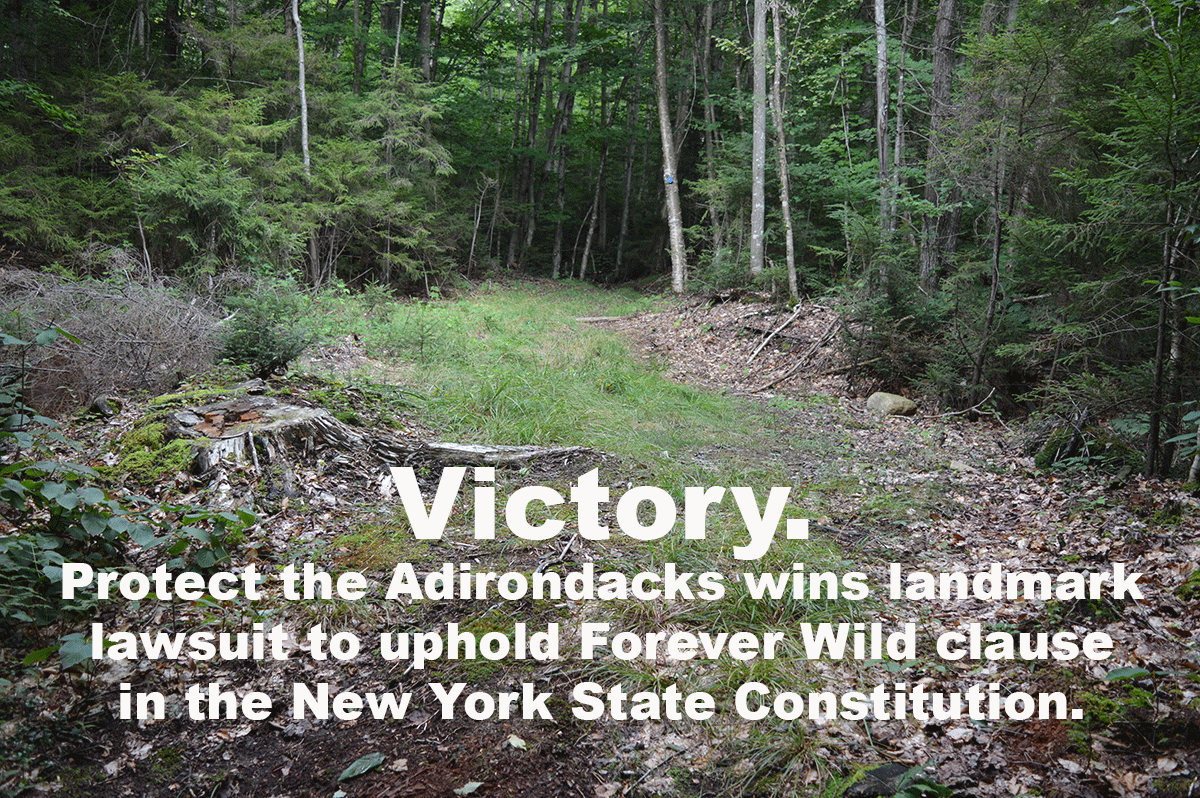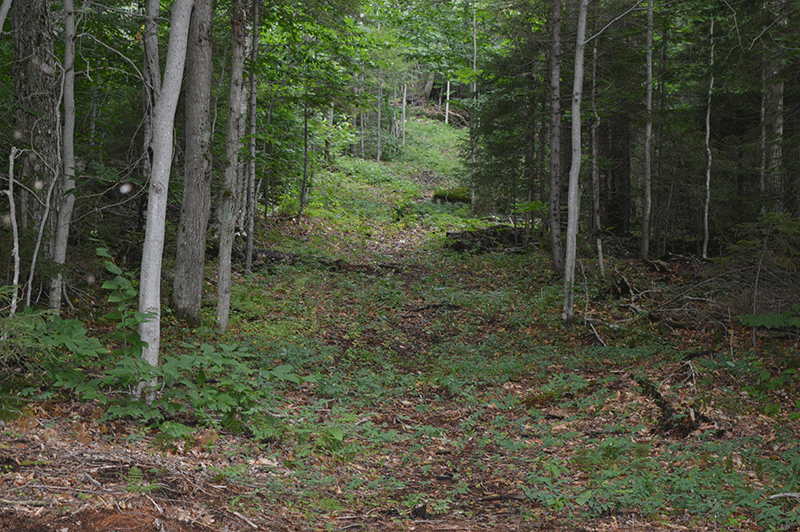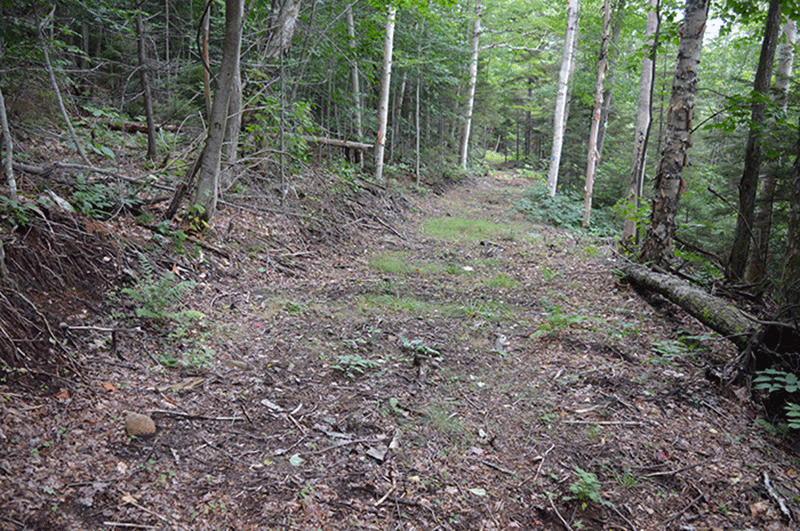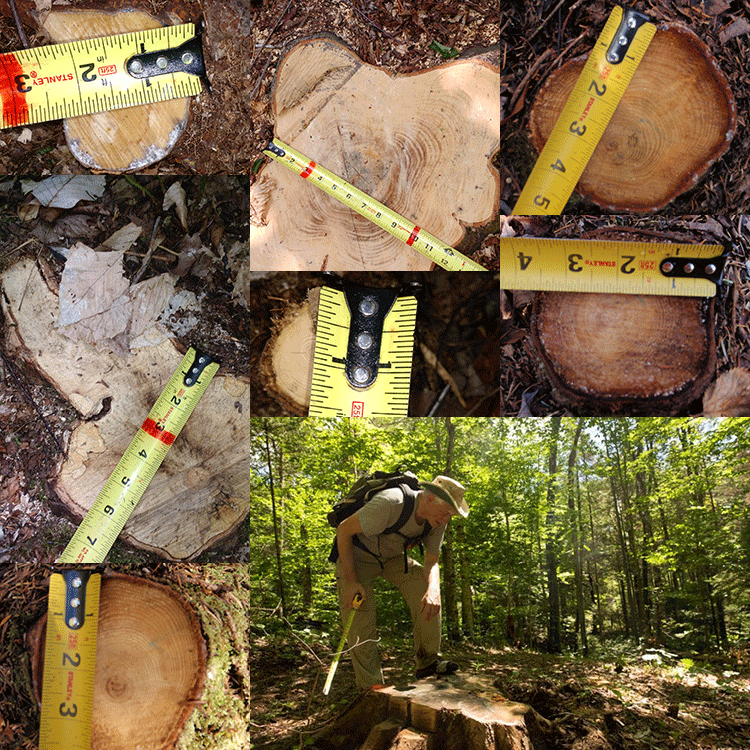The Cuomo Administration’s plan to expand motorized use on the public Forest Preserve in the Adirondacks by building hundreds of miles of wide Class II snowmobile trails was ruled unconstitutional by the state’s highest court.
This historic decision will shape Forest Preserve management for decades to come.
Albany, NY – The New York Court of Appeals, the state’s highest court, released a historic 4-2 decision today in favor of Protect the Adirondacks that upheld Article 14, Section 1, of the New York State Constitution, the famed “forever wild” clause. In 2013, Protect the Adirondacks sued the Department of Environmental Conservation (DEC) and Adirondack Park Agency (APA) alleging that construction of “Class II Community Connector” snowmobile trails on the Adirondack Forest Preserve violated Article 14, Section 1, due to excessive tree cutting and destructive changes to the land. Today’s ruling found that the cutting of over 25,000 trees and the clearing of 27 acres of forest, to build the first 27 miles of Class II trails violated Article 14. The APA and DEC have approved a network of hundreds of miles of Class II trails in the Adirondack Forest Preserve. The Court’s decision is likely to put an end to those plans, while still allowing for less destructive building and maintenance of trails on the Forest Preserve.
Article 14, Section 1 states, in relevant part, that “[t]he lands of the state, now owned or hereafter acquired, constituting the Forest Preserve as now fixed by law, shall be forever kept as wild forest lands. They shall not be leased, sold or exchanged, or be taken by any corporation, public or private, nor shall the timber thereon be sold, removed or destroyed.”
“Protect the Adirondacks and conservationists across New York are delighted with the Court of Appeals decision. Forever wild means a lot more today, which will ensure that the Adirondacks are truly protected for the generations to come,” said Chuck Clusen, Chair of Protect the Adirondacks.
“This decision affirms the wisdom and foresight of the framers of Article 14, Section 1 at the Constitutional Convention of 1894 when they recognized that the executive branch of state government could not be trusted to protect the Forest Preserve from destruction, and so enshrined its protection in the Constitution, where the courts and the People of the State could protect it whenever the Executive Branch failed to,” said John Caffry, the lead attorney for Protect the Adirondacks in the case.
The Court of Appeals decision today follows a decision in July 2019 by the Appellate Division, Third Department, which ruled 4-1 in favor of Protect the Adirondacks that the tree cutting by the state to build the Class II trails violated Article 14, Section 1. The Appellate Division reversed the trial court’s ruling in favor of the state that was issued in December 2017 following a 13-day trial in State Supreme Court in Albany in early 2017.
Click here to read the Court of Appeals decision.
The Court stated:
“We now affirm and hold that the planned construction of the Class II community connector trails would violate the constitution.” (p. 4)
“Further, the Class II trails require greater interference with the natural development of the Forest Preserve than is necessary to accommodate hikers. Their construction is based on the travel path and speed of a motorized vehicle used solely during the snow season. The trails may not be built like roads for automobiles or trucks, but neither are they constructed as typical hiking trails.” (p. 10)
“If the people of the State of New York decide that these Class II community connector trails are sufficiently beneficial, despite their impact on the Forest Preserve, then that determination may be realized through constitutional amendment. Indeed, other projects to enhance recreation or provide access by motorized transport have required constitutional amendment. Since its enactment in 1894, the forever wild provision has been amended 19 times; 4 of those amendments have come in the past 15 years. Those constitutional amendments have authorized, among other initiatives, the construction and maintenance of specific highways, ski trails, and bike lanes in the Forest Preserve. If a constitutional amendment is required for projects that enhance recreation (bobsleigh runs; ski trails) or improve mobility (roads) or do both (bike lanes within preexisting roads), then a constitutional amendment is also required to construct rights of way for a different form of motorized transportation (snowmobiles).” (p. 12-13)
“If the trails at issue here are equally important to New York as those projects were, then the people can express their will accordingly through the democratic process. Until they say otherwise, however, the door is closed because the planned Class II trails are constitutionally forbidden.” (p. 13)
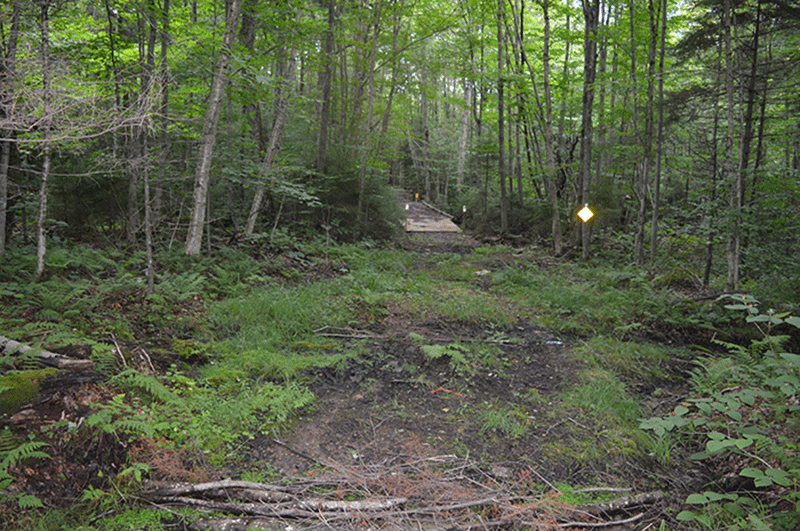
The Class II Trail bridge in this picture is 12 feet wide. The amount of forest cleared around this bridge was nearly 50 feet wide. Class II trails require extensive tree cutting and are nothing like hiking trails.
In 2013, Protect the Adirondacks launched this lawsuit to challenge the constitutionality of Class II trails based on the unprecedented high level of tree cutting and environmental damage to the Forest Preserve’s terrain from extensive grading and flattening with heavy equipment. The first 34 miles of Class II trails (those constructed or approved for construction between January 2012 and October 2014), out of an overall plan to create hundreds of miles of such trails, involved the cutting of about 25,000 trees and the clearing of over 37 acres of forest in the Forest Preserve.
“The Court’s decision upholds longstanding precedent, and the public’s overwhelming support, for defending the unique and important constitutional protection given to the Forest Preserve. I’m proud to have been part of an amazing team that advocated for years to stop the state from cutting trees in the Forest Preserve in violation of that constitutional protection,” said Claudia Braymer, an attorney for Protect the Adirondacks in the case.
“This is a great day for the public forever wild Forest Preserve. This is a major decision, one for the books, in the history of the Forest Preserve. The 3-million acre Forest Preserve is the finest state-owned public lands system in the United States and it has been protected and expanded through a multi-generational, bipartisan commitment of New Yorkers for over 125 years,” said Peter Bauer, Executive Director of Protect the Adirondacks. “Today’s Court of Appeals decision is a historic victory because the court upheld the constitutional protection of the forever wild Forest Preserve and found that the Cuomo administration and state agencies had engaged in unconstitutional destruction of its trees.”
Court of Appeals Decisions Upholds Forever Wild Clause in State Constitution
Today’s decision by the Court of Appeals is not only historic in its upholding of the forever wild clause, but also clarified key points in the public understanding of it. First, the Court ruled that the level of tree cutting by the state to build Class II trails was unconstitutional and exceeded the level of tree cutting permitted by prior court decisions in 1930 and 1993 regarding compliance with Article 14, Section 1.
Second, the Court’s decision stated that the framers of the State Constitution’s forever wild clause did not limit protections against substantial tree cutting to only large, merchantable “timber”, as DEC and its allies had argued. Third, the Court found that the use of the word “timber” in its historic context in the forever wild clause included all trees regardless of their size. Small trees that are less than 3 inches diameter at breast height (DBH), which can often be over 75 years old or older, are ecologically important to the functioning of the forest ecosystem and must be considered in state management decisions. Today’s decision should help to clarify state Forest Preserve management practices going forward.
Tree cutting is permissible on the Forest Preserve to facilitate public recreation, but that tree cutting has been strictly limited for the last 90 years by prior court decisions. In 1930, the Court of Appeals issued the Association for the Protection of the Adirondacks v MacDonald decision in which it ruled that state plans to clear 4.5 acres and cut down over 2,500 trees to build an Olympic bobsled track near Lake Placid violated Article 14. The Court established that limited tree cutting for a proper purpose was permitted, so long as it was not done to a “substantial extent” or a “material degree”. (Protect the Adirondacks is the successor organization to the Association for the Protection of the Adirondacks, which prevailed in the 1930 case; MacDonald was the Commissioner of the New York State Conservation Department at the time.)
In 1993, in the Balsam Lake Anglers Club v DEC decision, the Appellate Division, Third Department, held that very limited tree cutting on the Forest Preserve for building trails was permitted. The Appellate Division adhered to the 1930 decision when it found that cutting 350 trees over 1” DBH over the course of 2.3 miles, to extend a cross-country ski trail on the Forest Preserve in the Catskill Park, was allowable under Article 14. This level of tree cutting was neither substantial or material.
These two landmark cases had guided state tree cutting policy until the Cuomo administration decided to go in a different direction and the DEC under Commissioners Joe Martens and Basil Seggos embarked upon the greatest amount of tree cutting ever on the public Forest Preserve to build a new type of motorized recreational trail, the Class II snowmobile trails. The state’s decision to cut almost 7,000 large trees over 3” DBH and over 18,000 smaller trees between 1-3” DBH blew past these longstanding historic standards but has now been found to be illegal. Today’s decision in the Protect the Adirondacks case is the now the third seminal legal case about the forever wild clause in the State Constitution.
The forever wild clause in the State was approved by voters in 1894 as part of the new State Constitution. Not a single word has been changed since then. By protecting the public Forest Preserve in the State Constitution, generations of New Yorkers have determined that major changes to the Forest Preserve can only be undertaken through an amendment to the Constitution approved by the voters and cannot be undertaken by legislation or by administrative actions by the Governor or a state agency. The decision to build a network of hundreds of miles of Class II trails in the Forest Preserve should have been undertaken through a constitutional amendment, not unilaterally by state agencies, but the Cuomo administration chose not to ask the voters for their approval, and decided to violate the Constitution instead.
“The court ruled today that the Constitution does not provide protections to some trees but not to others. The forever wild clause protects all trees. State agencies have been allowed to undertake any number of management activities on the Forest Preserve in order to maintain and protect it and provide for public recreational activities, provided that tree cutting does not occur ‘to a substantial extent’ or ‘to a material degree.’ The court reaffirmed the forever wild clause and past legal decisions and precedents when it determined that cutting of about 25,000 trees to build a network of Class II trails was unconstitutional and violated standards that have been in place for decades,” said Peter Bauer.
“There are many ways that the state agencies responsible for managing the Adirondack and Catskill Parks provide access for the public to enjoy these special places. Nevertheless, as the Court has confirmed, the avenues that the State provides for accessing the Forest Preserve cannot violate the Constitution’s ‘forever wild’ clause. The public has retained its ability to decide the fate of the Forest Preserve through the constitutional amendment process,” said Claudia Braymer, an attorney for Protect the Adirondacks.
The Impact of the Court Decision on Forest Preserve Management
Today’s decision will not prevent trail crews in the Adirondacks from building or maintaining hiking trails, mountainbike trails, and other trails. The amount of tree cutting needed for narrow foot trails is significantly less than the amount needed for wide Class II snowmobile trails. There simply are not foot trails in the Adirondack Forest Preserve that require cutting 700 to 1,000 trees of 1” DBH or greater per mile during construction or maintenance. A well-designed hiking trail weaves between trees, avoids critical habitats, and follows the contours of the land. Class II trails remove high amounts of trees and require long straight sections where motor vehicles can operate safely at high rates of speed.
“The Cuomo administration has made the expansion of motor vehicle use in the Forest Preserve one of its biggest priorities in the Adirondack Park, pushing longstanding policies and laws to the breaking point. Today, we see clearly in the decision by New York’s highest court that the Cuomo administration broke the law. Hopefully, this decision will put the brakes on the Governor and his state agencies. There are a wide variety of public recreational activities that can be facilitated on the Forest Preserve, but they must be managed in a way that complies with the State Constitution and the forever wild clause. It’s time for the Cuomo administration and the DEC and APA to get back on the right side of forever wild,” said Peter Bauer.
Protect the Adirondacks looks forward to working with the administration to update DEC and APA’s policies and procedures to ensure that future state activities on the Forest Preserve comply with the Constitution.
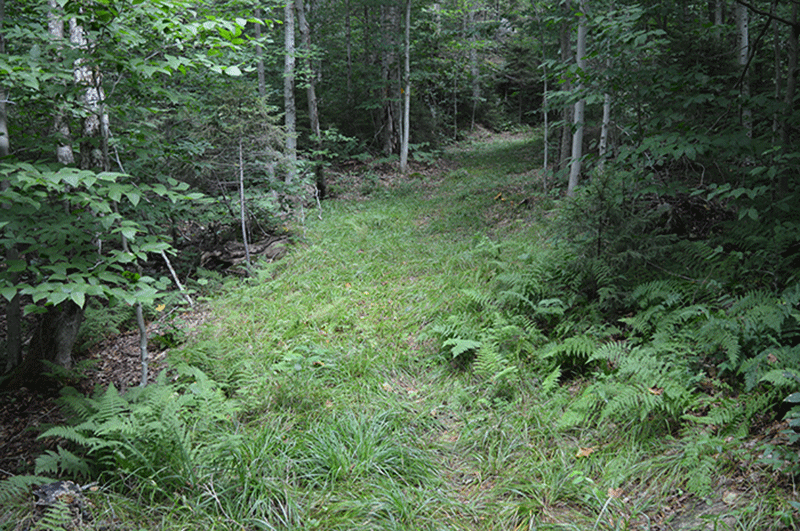
Wide Class II snowmobile trails have become long grassy corridors through intact forests, slicing the public Forest Preserve.
Landmark Lawsuit Timeline
Protect the Adirondacks launched this lawsuit against the Department of Environmental Conservation and Adirondack Park Agency in 2013 alleging that Class II trails violated Article 14, Section 1, of the New York State Constitution due to excessive tree cutting and terrain alterations.
Protect the Adirondacks and its expert witnesses undertook extensive fieldwork in 2012-13 and in 2015-16 to document abuses to the Forest Preserve. Counts of over 16,000 tree stumps on Class II trails, with diameter measurements and GPS locations, including photographs of over 12,000 tree stumps, were made.
In the summer of 2016 Protect the Adirondacks obtained a temporary restraining order that stopped all tree cutting by the state on Class II trails after the first 27 miles of trails were in various stages of development. The DEC and APA had approved plans for a network of hundreds of miles of Class II trails in the Forest Preserve in the Adirondacks.
In early 2017, a 13-day trial was held in state Supreme Court in Albany. In December 2017 the trial judge ruled against Protect the Adirondacks. In 2018, Protect the Adirondacks appealed to the Appellate Division, Third Department, which in a 4-1 decision overturned the lower court’s ruling in July 2019. In 2020, the DEC and APA appealed to the Court of Appeals. Oral arguments were held in March 2021 at the Court of Appeals. Today, the Court of Appeals ruled 4 to 2 in favor of Protect the Adirondacks that the DEC and APA have violated the forever wild clause of the New York State Constitution.
The 2017 Trial Set the Factual Basis and Legal Record for this Historic Decision
In early 2017, a 13-day trial was held in state Supreme Court in Albany. This trial was important for setting the factual basis and legal record for the case. This was the first trial held on the forever wild clause in the state’s history, as the 1930 and 1993 cases did not go to trial. Protect the Adirondacks undertook months of fieldwork and provided expert witnesses to build the factual record.
Adirondack historian Dr. Philip Terrie testified about the historic meaning and use of the word “timber”, as used in the forever wild clause, and about the intention of the Constitutional Convention of 1894 to protect the Forest Preserve from abuse by the state agencies that had previously been charged with protecting it. Forest ecologist Steve Signell testified about the level of tree cutting and forest habitat changes that had occurred during the construction of Class II trails. Conservation biologist Dr. Ron Sutherland, from the Wildlands Project, testified about environmental impacts from Class II trails. Professional hiking trail builder William Amadon testified about the differences between foot trails and Class II trails. Peter Bauer, Executive Director of Protect the Adirondacks, testified about tree/stump counting methods and photographic exhibits.
The testimony and admitted evidence established the factual basis used by the State Supreme Court, Appellate Division, Third Department, and Court of Appeals, including:
- Article 14 was added to the Constitution after a decade of abuse of the Forest Preserve by state government. The delegates to the Constitutional Convention of 1894 realized that the legislative and executive branches could not be trusted to safeguard it.
- The historic use of the word “timber” in the 1890s in the U.S. commonly referred to all standing trees.
- The word “timber” by the framers of Article 14, Section 1, was used interchangeably with the words “forest” and “trees” at the 1894 Constitutional Convention.
- There was no standard limiting the use of the word “timber” to any particular size of tree, or by commercial marketablility, by the framers of the forever wild clause in the State Constitution in 1894.
- Counts of the actual or proposed destruction of 6,899 trees over 3 inches DBH, and over 18,000 trees between 1-3 inches DBH.
- Counts of over 8,500 standing trees marked for cutting to build Class II trails.
- Evidence of tree ring counts on tree stumps of less than 3 inches DBH on Class II trails showed that there were many older than 50, 60 and 75 years in age.
- Evidence that many maple, white pine, yellow birch, beech, and ash, among other trees, that were only 1-3” DBH, could be 30, 40 and over 50 feet in height.
- Evidence that the first 34.06 miles of Class II trails resulted in clearing over 37 acres of forest.
- Evidence that on vast stretches of Class II trails extensive grass habitat had replaced intact forest habitat.
- Evidence that long stretches of Class II trails on turns and slopes with extensive bench cuts resulted on clearing widths of up to 20 feet in some locations.
- Evidence that Class II trail construction destroyed hundreds of trees per mile.
- Counts of tree cutting on the newly built Coney Mountain and Goodman Mountain hiking trails that showed significantly fewer trees of all sizes were cut per mile as compared to Class II trails. (There were 13 trees of 1” DBH or more cut for the 1-mile Coney Mountain Trail, and 63 trees cut for the 1.25 miles of the Goodman Mountain Trail.)
- Testimony that there was no scientific basis for the state’s current policy on tree cutting on the Forest Preserve, which only counted trees 3” and greater. It was based on past practices, not science.
- Evidence that the supposed environmental benefit to the Forest Preserve of building Class II trails near the periphery of Forest Preserve areas, while closing interior trails, was actually only a benefit on paper because many of the interior trails remained open for motor vehicle use or other use, despite being closed to snowmobiling, so they would not revegetate. Some of those trails had already been abandoned years earlier.
- Testimony that the geometric shapes of extensive large bench cutting on Class II trails introduced human shapes that disrupted the aesthetic natural wild forest setting.
- Testimony about the significant differences between foot trails and Class II trails in widths, grading, flattening, clearing, root/rock/stump removal, the size and types of bridges, and the use of street signs with reflectors.
- An extensive photographic record catalogued the level of tree cutting, environmental impacts, and supported the testimony of the experts.
At the conclusion of the 2017 trial, it was clear that Protect the Adirondacks had accurately interpreted the spirit, words and vision of the framers of Article 14, Section 1. It was also clear that Protect the Adirondacks had historic Forest Preserve case law and legal precedent, the facts, and science on its side, and its legal team and historian possessed the strongest understanding of Forest Preserve law and Article 14, Section 1.
Click here to read background information on Article 14 and the word “timber.”
Click here to read background information on Article 14 and small diameter trees.
Click here for copies of the briefs submitted at the Court of Appeals.
Click here for a recap of the trail and trial transcripts.

Class II trails are long corridors through the Forest Preserve designed and constructed accommodate motor vehicles at high rates of speed.
The Winning Legal Team for Protect the Adirondacks
The legal team that won this historic victory for Protect the Adirondacks to uphold the forever wild clause in the State Constitution took on this case as a pro bono labor of love for more than eight years. John Caffry, from the Glens Falls law firm of Caffry & Flower, was the lead attorney. Caffry was previously involved in the Balsam Lake case in 1993 that focused on the forever wild clause, as well as the 2007 Jessup River Unit Management Plan case against the APA that had halted the state’s snowmobile trail expansion plans before the Cuomo administration revived Class II trails in 2011.
Claudia Braymer, from Braymer Law, PLLC in Glens Falls, successfully argued for the 2016 injunction that initially stopped work on the trails, was the second chair attorney in the trial, and co-authored the appellate briefs. Amanda Kukle, from Caffry and Flower, assisted with the appeals, and William Demarest, from Tooher & Barone in Albany, assisted with trial preparation and management. Protect the Adirondacks’ Executive Director Peter Bauer coordinated fieldwork, retained the expert witnesses for the trial, and supported their pre-trial field assessments, and assisted the attorneys during the trial.
Friend of the Court Briefs
At the Court of Appeals the Sierra Club Atlantic Chapter, The Adirondack Council, and Adirondack Wild: Friends of the Forest Preserve submitted amicus curiae briefs in support of Protect the Adirondacks’ position. Today’s decision at the Court of Appeals showed that these organizations were on the right side of history. On the wrong side of history were the following organizations that submitted deeply flawed and unconvincing amicus curiae briefs in support of the state: the Adirondack Mountain Club and Open Space Institute; The Nature Conservancy; the Adirondack Association of Towns and Villages and the NYS Association of Counties; and the Empire State Forest Products Association.

